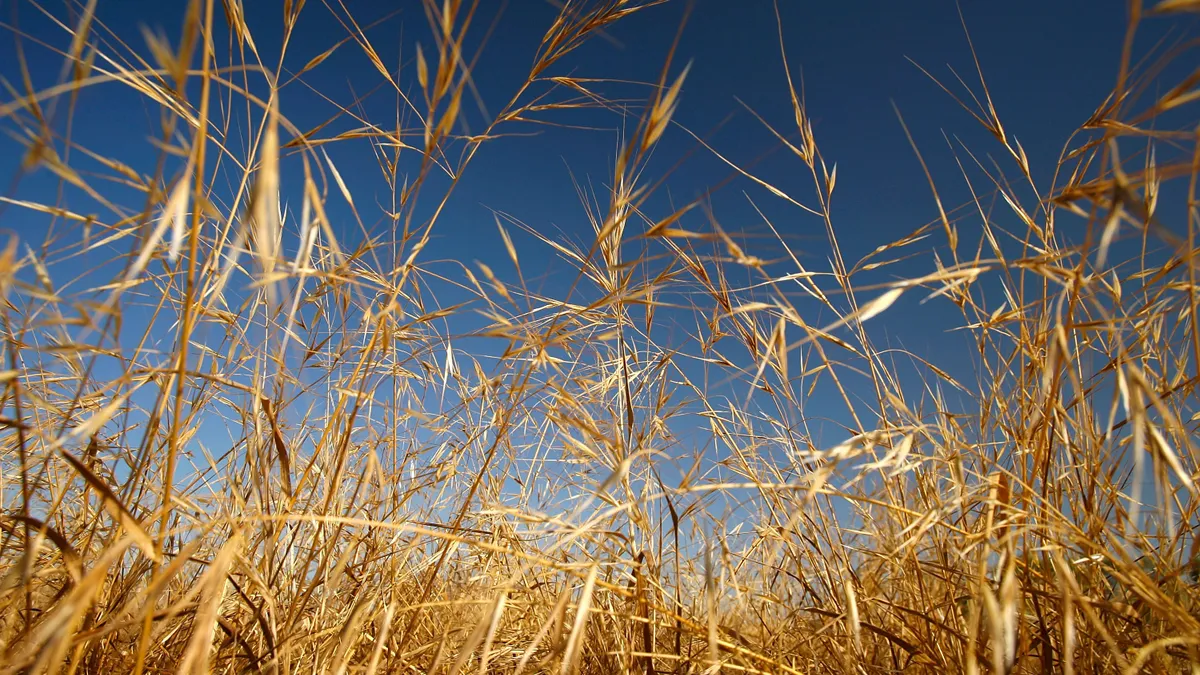Dive Brief:
-
Nearly half of the winter wheat growing area is experiencing drought after a month of extreme heat and dryness, raising concerns for U.S. farmers about crops at risk of damage ahead of planting season.
-
Brad Rippey, a meteorologist with the U.S. Department of Agriculture, said that 47% of winter wheat production is facing drought-like conditions that could impact crop growth due to lack of moisture.
-
If dry conditions continue, a shortage of supplies could pressure prices for everyday food items during a period of strong inflation. Cotton and sorghum have also been affected by the August heat blast, while corn and soybeans went largely unscathed, according to the U.S. Drought Monitor.
Dive Insight:
Corn and soybeans saw an increase in drought coverage, climbing over the past month from 5% for both commodities to about 8% and 12%, respectively, according to the U.S. Drought Monitor. A large portion of acreage is located in the Midwest, which had a relatively wet summer compared to other parts of the country.
“For the most part, the Midwest was immune to the dramatic changes that other areas of the country experienced,” Rippey said.
Meanwhile, cotton producing areas saw drought coverage nearly quadruple from 11% to 43% over the past month, data show. There was also late season deterioration for sorghum, Rippey said, noting a jump in drought from 29% to 45% over the same period.
Among the crops that could be most affected by a hot and dry summer is winter wheat, which is used in flour. The amount of winter wheat in drought climbed more than 15 percentage points over the past month as farmers began to plan out their crop. Spring wheat growing areas were largely unaffected with harvest wrapping up.
Beyond crops, drought conditions are also creating complications for meat producers. Drought coverage increased for hay and cattle production areas in August, reaching 29% and 24%, respectively, which are the highest they’ve been since the start of the year.
If extreme heat and dryness persist, supply issues could arise and pressure crop and commodity prices during a period of inflation. The number of cattle raised for beef has steadily declined in recent years, driven by high input costs and prolonged drought that incentivized ranchers to sell off their herds.
For the month of July, retail beef prices reached $8.15 per pound, marking the first time the national average has surpassed $8. Although feed costs are declining, Farm Bureau economist Bernt Nelson wrote that higher retail prices disincentivizes ranchers to hold onto female cows for breeding and herd expansion, which could keep consumer costs higher for longer.
"This rise in prices combined with the lingering effects of drought and higher production expenses, provided farmers incentives to liquidate cattle rather than trying to hold on."
As hot conditions continue across much of the country, California, one of the biggest agriculture states, is bracing for one of its most dangerous heat waves in years, with temperatures expected to reach 115 degrees in some areas.
The National Weather Service has issued an excessive heat warning for Los Angeles County and surrounding areas for the rest of the week.
Approximately 27.7% of the United States is experiencing drought, which is up 8 percentage points from what was seen at the end of July, Rippey said.











